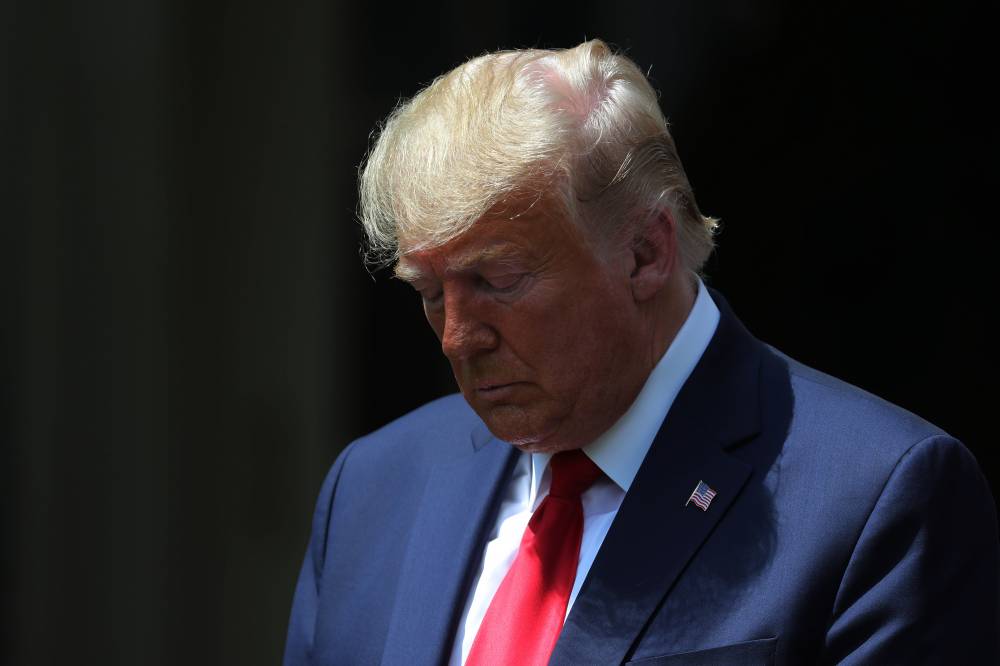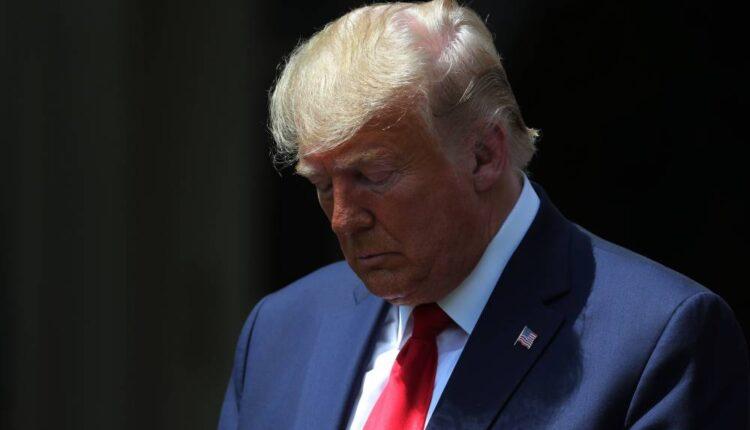
- The U.S. unemployment rate was 13.3% in May, the Bureau of Labor Statistics reported Friday.
- Critics alleged the Trump administration tampered with the data to reduce the unemployment rate, which would make the economy appear stronger than in reality.
- Economists say there is almost no way that could have happened.
President Donald Trump conducts a bill signing ceremony with members of his economic team in the Rose Garden at the White House on June 05, 2020.(Photo by Chip Somodevilla/Getty Images)
A conspiracy theory has emerged relative to the unemployment rate, suggesting that the Trump administration rigged official statistics to give the illusion of a rebounding economy.
But labor experts and economists have vigorously denounced such suggestions, which they call baseless and invalid.
"No economist worth his salt thinks the numbers have been fudged," said Michael Farren, a research fellow at George Mason University.
Zoom In IconArrows pointing outwards
The controversy was spurred by a few developments — namely, a surprising improvement in May's unemployment rate and a data disclosure about furloughed workers by the Bureau of Labor Statistics.
The agency reported a drop in the U.S. unemployment rate on Friday, to 13.3%.
The turnaround from April's 14.7% figure was a shocker — economists had predicted the rate to be closer to 20%, as millions of people continue to file for unemployment benefits each week as a result of the coronavirus pandemic.
More from Personal Finance:
Will the recession become a depression?
Long-term joblessness hasn't yet seen an uptick
Pandemic creates pension plan tension
While the rate is still higher than at any point since the Great Depression, the Trump administration and Republican allies seized on the reversal to tout the strength of the economy and their policy response to the virus.
Some critics immediately lambasted the BLS report as rigged.
"The trump folks fudged the figures and the real unemployment number was 17-19% unemployment not 13%," Howard Dean, a Democrat and the former governor of Vermont who ran for president in 2004, tweeted.
"You should always assume Trump lies," he added.
The BLS said in its report that the true unemployment rate was likely greater than 16% due to a data mis-classification error.
The agency determines the unemployment rate based on a survey of about 60,000 households. Nearly 5 million workers who were likely on temporary layoff (a furlough) in May — a statistic that increases the unemployment rate — were instead labeled as being "absent from work," a category that includes workers on vacation, for example.
This error likely reduced the unemployment rate by about 3 points, the Bureau said.
No political manipulation
But neither foul play nor ineptitude is at hand, according to economists.
"Political manipulation is 100% not an issue with BLS. Period," Ernie Tedeschi, an economist at Evercore ISI, wrote in a tweet.
To some extent, alleging foul play with unemployment numbers isn't a new political tactic.
President Trump claimed the unemployment rate was a "hoax" when running for president in 2016, when the unemployment rate was around 5%. (The unemployment rate had been declining steadily since the Great Recession, when it had topped out at 10%.)
Similarly, in the case of last month's unemployment figures, the allegation of data being rigged doesn't square with reality.
For one, the BLS was transparent about its data issues. Its misclassification of furloughed workers also wasn't isolated to just the May report — the Bureau reported the same error in March and April, too, when the unemployment rate was getting worse, not better.
The unemployment rate would have been about 20% in April had these furloughed workers been factored in, the agency said.
Zoom In IconArrows pointing outwards
The same error also occurred in October 2013, when President Obama was in office, according to Erica Groshen, a senior labor economics advisor at Cornell University and former commissioner of the Bureau of Labor Statistics commissioner from 2013 to 2017.
'Off the rails'
The reason for the mis-classification is partly a result of the speed and scope of the recession caused by the pandemic.
Even typical recessions generally play out much more slowly. By contrast, the economy shed jobs at light speed in March and April, when more than 17 million people became unemployed.
And that doesn't count the millions that may have dropped out of the labor force entirely, perhaps to avoid getting sick or if they perceived it was unlikely they'd find a job.
"Our traditional economic measures aren't made for crises like a pandemic," Farren said. "We're kind of off the rails from previous experience."
VIDEO6:1906:19Why the real unemployment rate may be higher than reportedSquawk Box
Tinkering with the 13.3% official rate to account for mis-classifications would violate the policy of the Bureau, which doesn't alter survey answers or how it calculates its unemployment rate after the fact in order to maintain consistency and data integrity, Groshen said.
Further, the bureau's commissioner is the agency's only political appointee, and doesn't see the unemployment figures until just prior to their release, she added. The commissioner serves a fixed term of office, not at the pleasure of the president. The rest of the staff are career civil servants.
And red flags would be raised if someone tried tampering with the numbers — such as the official data release being delayed to the public, omitted supporting documentation, information leaks or personnel changes. But they haven't emerged.
"Nothing like that happened here," Groshen said.
VIDEO2:2502:25How the unemployment rate is calculatedInvest in You: Ready. Set. Grow.
Source: cnbc.com

